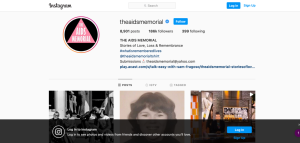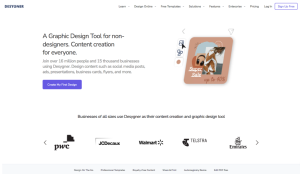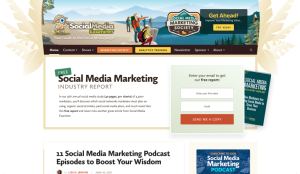 |
June 25, 2021 Volume 27, Number 25 |
General Interest |
Theme: Social Media Day |
Revisited |
In the News |
General InterestBack to Top | |
 |
|
 |
|
 |
|
 |
|
 |
|
Theme: Social Media DayBack to Top | |
 |
|
 |
|
 |
|
 |
|
 |
|
RevisitedBack to Top | |
 |
|
In the NewsBack to Top | |
Breakthrough Gene Therapy Partially Restores Sight to Blind Man | |
|
A gene-based therapy partially restored a blind man's vision https://www.sciencenews.org/article/blindness-retinitis-pigmentosa-gene-therapy-vision-optogenetics How Gene Therapy and Algae Proteins Partially Restored a Blind Man's Sight https://singularityhub.com/2021/05/25/how-gene-therapy-and-algae-proteins-partially-restored-a-blind-mans-sight/ Gene therapy partially restores sight in one eye for a man who's been blind for nearly 40 years https://www.sciencefocus.com/news/gene-therapy-partially-restores-sight-in-one-eye-for-a-man-whos-been-blind-for-nearly-40-years/ Partial recovery of visual function in a blind patient after optogenetic therapy https://www.nature.com/articles/s41591-021-01351-4 Optogenetics: Controlling Your Genes with Light https://www.stitcher.com/show/stuff-you-should-know/episode/optogenetics-controlling-your-genes-with-light-67259052 Open Your Eyes: A resource for early years and primary education exploring blindness around the world https://www.sightsavers.org/wp-content/uploads/2017/09/Open-your-eyes-booklet_e.pdf A 58-year-old man who has been blind for almost 40 years can now see and count objects, thanks to breakthroughs in a gene treatment called optogenetic therapy. Optogenetics has been studied for more than a decade to treat vision impairment caused by degenerative diseases. Unlike traditional gene therapy and gene editing, which can only slow the progression of degenerative eye diseases, optogenetics may be able to restore sight to those who have already lost their vision. The new treatment uses protein from algae to induce nerve cells to respond to light. Green algae has evolved light-sensing proteins that can change shape and move towards light. Researchers used a virus injected into the man's eye to teach cells how to produce the protein. In order to see, the man must wear special goggles that control light entering his eye and help process visual information. While wearing the goggles, the man was able to see the white stripes on a pedestrian crosswalk and identify, count, and reach out and grasp objects like a book sitting on a table. The anonymous patient underwent several months of training with the goggles, and the team reported he was "very excited," when he first began to regain his sight. The results represent proof of concept, says the research team. The man is part of a larger clinical trial, but due to COVID-19, so far he is the only patient who has been able to complete the training. Researchers hope optogenetics could help reverse macular degeneration, which impacts millions globally, as well as other degenerative eye diseases. [HCL] At the first link for Science News, Tina Hesman Saey describes how the optogenetic treatment works (including a video of the patient using the goggles to identify objects) and what makes it different from traditional gene therapy, gene editing, and previous optogenetic studies. Shelly Fan's article for Singularity Hub, in the second link details how the research team used the light-sensing algae protein, ChrimsonR, to create "hybrid eyes," and how the specialized goggles interact with ChrimsonR. In the third link, Amy Barrett, writing for BBC Science Focus Magazine, considers how the treatment may help sufferers of degenerative eye diseases. Readers can click the fourth link to access the original paper published by the research team in Nature. For a deeper dive into optogenetics, the fifth link leads to an episode of the Stuff You Should Know podcast considering the potential benefits and risks of this groundbreaking gene therapy. Educators can follow the final link for lesson plans to engage elementary students in learning about visual impairment, developed by Irish nonprofit Sightsavers (the activities start on page four). | |





